Meet the Builder Behind this Backyard Rock Climbing Wall
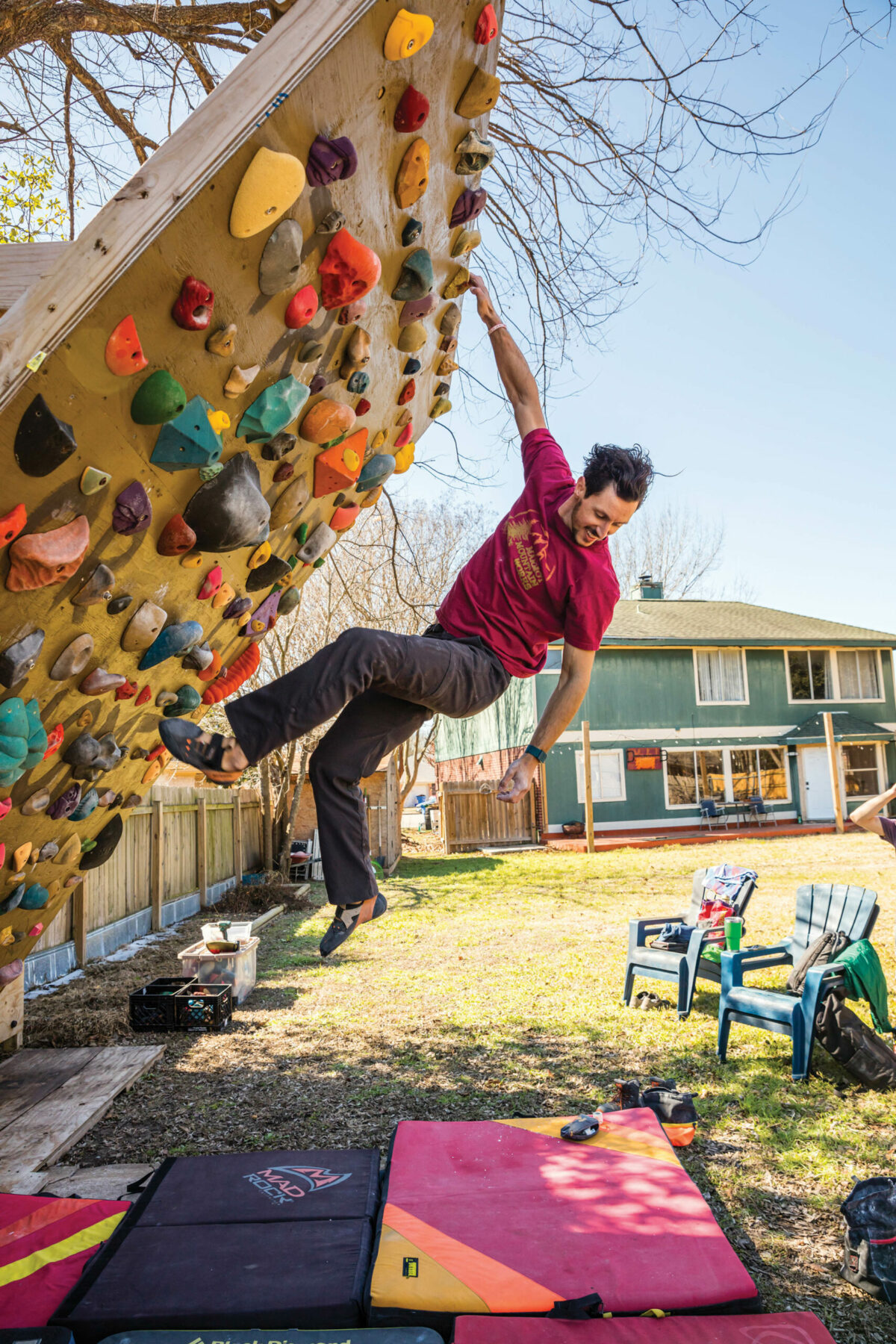
Six years ago, Damir Okanovic knew nothing about rock climbing much less anything about what it takes to build a rock climbing wall. But by the end of 2020, he had built a climbing wall in his backyard, had been a climbing coach at Crux Climbing Center for three years and had been doing personal training and leading youth lessons for five years.
Though Okanovic hasn’t always been involved in rock climbing, he’s been an active athlete for several years. He made it to the national finals of American Ninja Warrior in seasons 9 and 11 and was even on Team Europe in USA vs. The World in January of 2020.
After moving from Upstate New York in 2016, he eventually picked up rock climbing and even started leading youth programs at Austin Bouldering Project (ABP) to improve his grip strength for ninja training since he tries out each year.
When COVID-19 hit and gyms started closing in late March of 2020, Okanovic refused to fall behind on his training.
“I needed this in my life,” Okanovic says. “Otherwise, I’m going to get weak, and I can’t afford to be weak because everyone else is progressing.”
The Path to Climbing
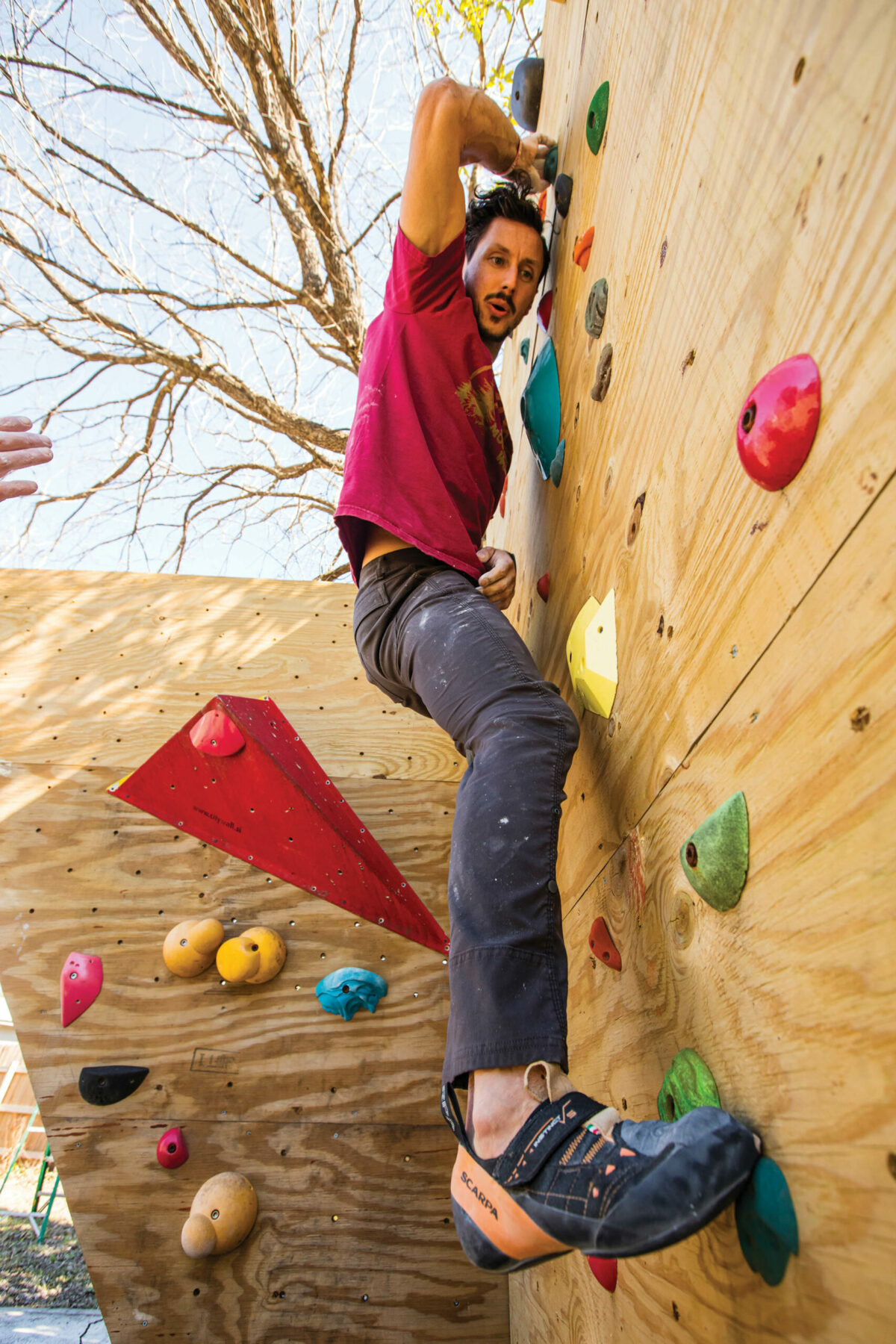
Okanovic is originally from Croatia but immigrated to New York with his family when he was 10. When he moved to Austin, he was first drawn to rock climbing because of the community and camaraderie surrounding the sport. He remembers his first day climbing at ABP when multiple strangers approached him with advice to improve his climbing strategy and skill.
“Coming from New York where you don’t really talk to anyone — here are just people waving at you and being super nice,” Okanovic says. “The people drew me into wanting to pursue it more and become better.”
Today, Okanovic climbs at least five times a week alongside his coaching. As a youth program leader, he often takes students to do outdoor climbing at various sites around and outside of Austin including Bull Creek, Gus Fruh, Rogers Park, McKinney Falls State Park, Milton Reimers Ranch and other spots along Barton Creek Greenbelt.
When the pandemic hit, outdoor climbing became the only alternative to rock climbing, unless you had your own equipment at home. So Okanovic decided to build a climbing wall to continue his training.
The Great Wall
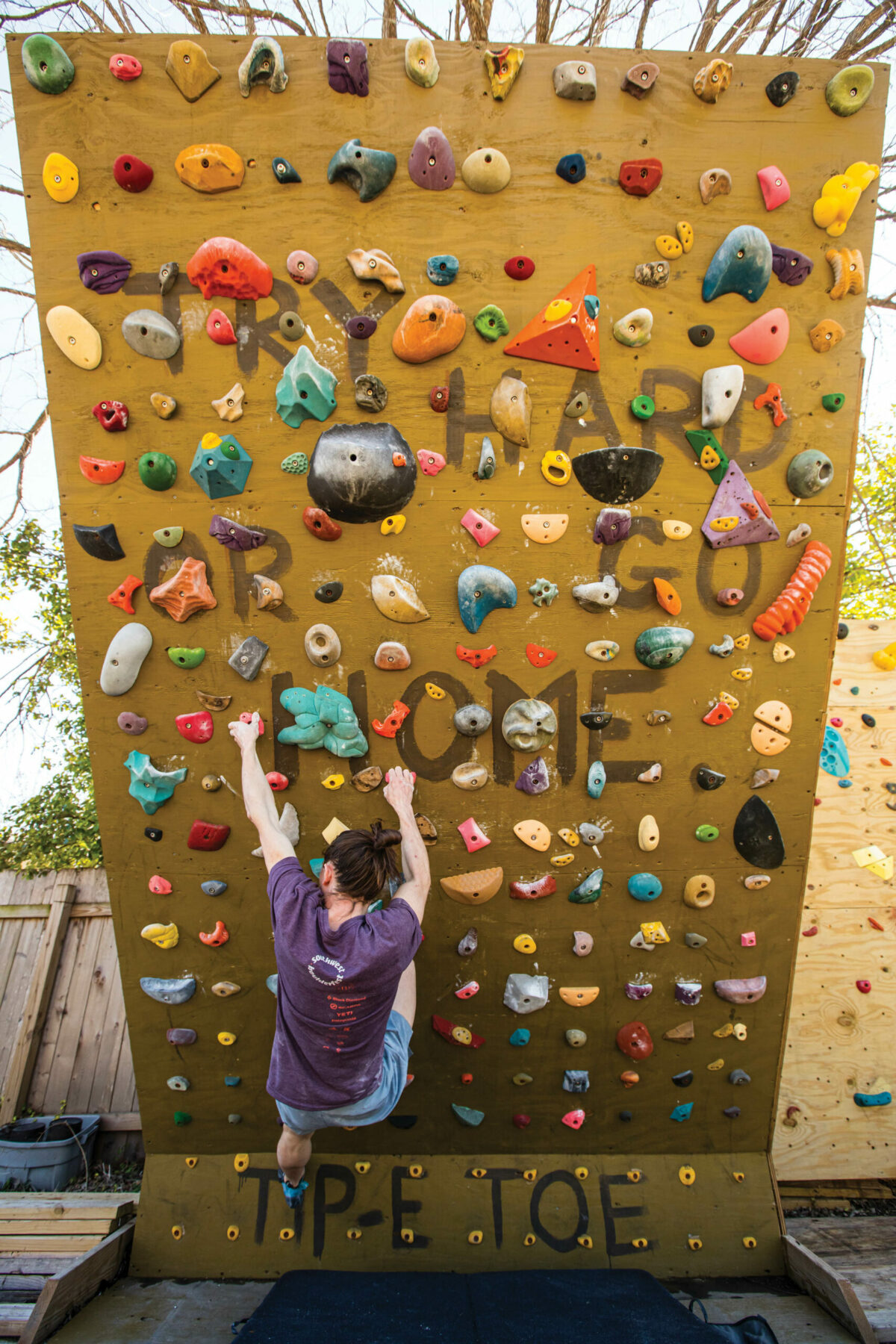
Although building a rock climbing wall was new territory for Okanovic, working with wood wasn’t. He’s always crafted with wood as he built his own deck, shed and other at-home projects like ninja gyms. When he decided to build the climbing wall in his backyard, he got help from his roommate at the time, Riley Wood. Surprisingly, it only took three days to build the wall, working on it all day and night.
“I thought it was going to take us a lot longer because I was going in with no background of building a climbing wall,” Okanovic says. “I built chairs, benches and simple things like picture frames, but not a climbing wall.”
They started by making an 8-foot-tall wall but realized once it was angled, Okanovic, who is six feet tall, could easily touch the top. They scrapped the first draft to make the second wall that is now 12 feet tall and eight feet wide. With this final wall, they added a kicker panel at the bottom and a 40-degree overhang.
Okanovic says angling the board was one of the most difficult parts of the building process. They had to use a truck, rope and tree to act as a pulley in order to lift the 300-pound board with each panel weighing about 60 pounds. While the wall was angled, they built everything around it.
Though building the actual wall took a short amount of time, waiting on the climbing holds took the longest as they were waiting to have them shipped from Utah. Eventually, they decided to make their own holds out of wood, filing them down and painting them to make the holds smooth and easy to grip. Unfortunately, they only had about five or six holds on the wall at the time.
About a month in, they were finally able to order holds and fill more of the wall. It wasn’t until the second or third month that they were able to fill out the rest of the wall. When North Austin Rock Gym permanently closed because of the pandemic, Okanovic and Wood were able to reuse the holds that the gym was selling and bought about 300 to complete their wall.
The Canvas of Climbing
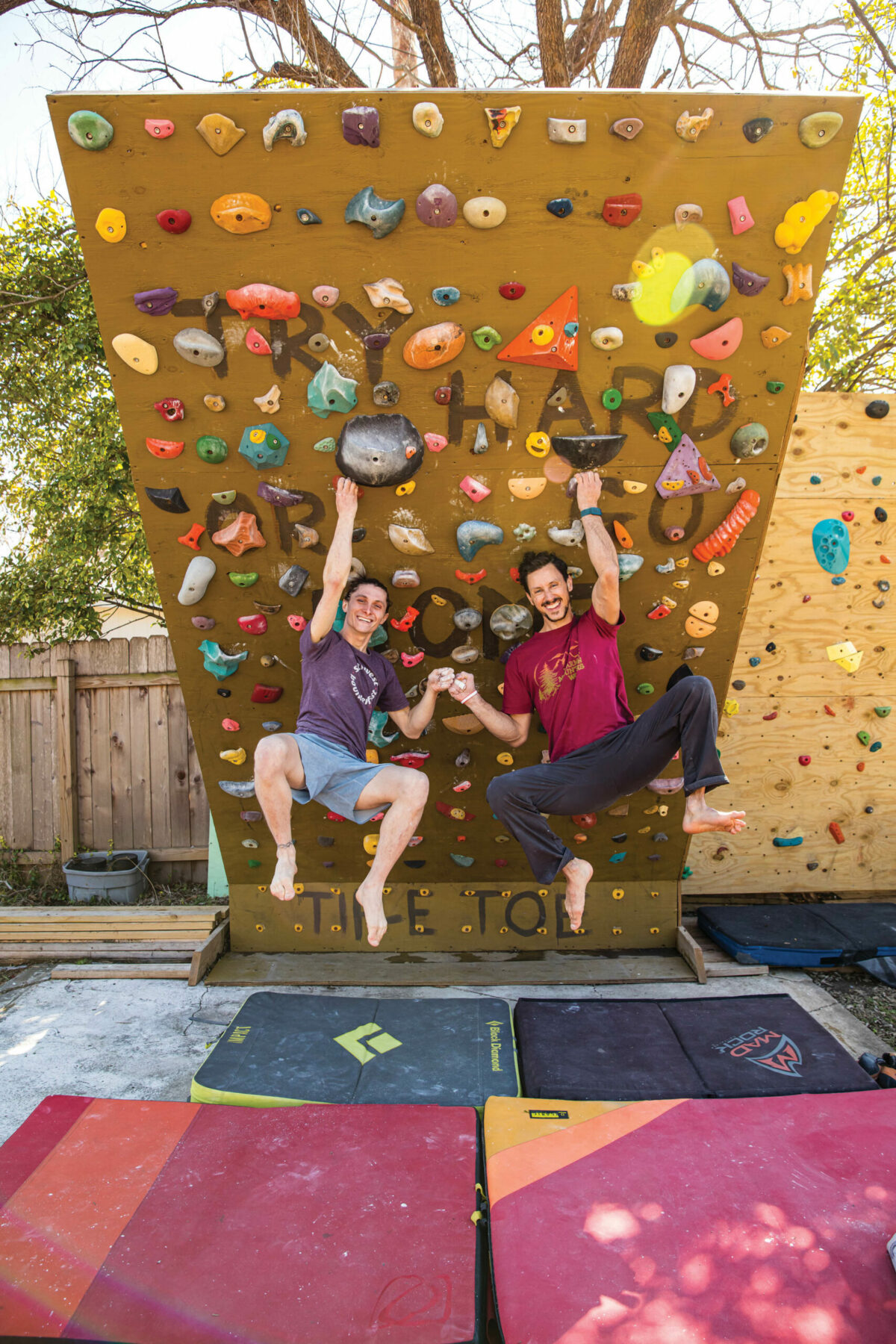
Once they had the wall built, it was time to set the route. To do this, they had to pre-drill holes and put t-nuts into the panels that the holds would connect to. Then, every time you remove a hold, you can put it anywhere else, as long as it fits within those pre-drilled holes. As you interchange these holds, you create a new route each time.
“The best part was looking at the plain wall,” Okanovic says. “You’re looking at a canvas, and you want to paint all over it. That’s what we did — we looked at the wall and set all these routes.”
Okanovic likens route setting to putting together a puzzle — using trial and error to figure out the best route. They based each hold position on the difficulty and type of reach someone would need to execute while climbing. Some positions result in dynamic movements, in which you rely on momentum and timing, while others result in static movements, in which you rely on grip strength.
They modeled most of their route setting on outdoor climbing as they visited places like the Greenbelt and replicated the climbs on their wall. At these outdoor sites, they found the crux — the hardest part of the climb — and used these to set different routes.
A lot of the route setting was also based on the estimated height of a person, as being taller or shorter can impact the way you execute a movement. These tactics would help them know when to move a hold or swap it with a different one.
The Risk and Reward
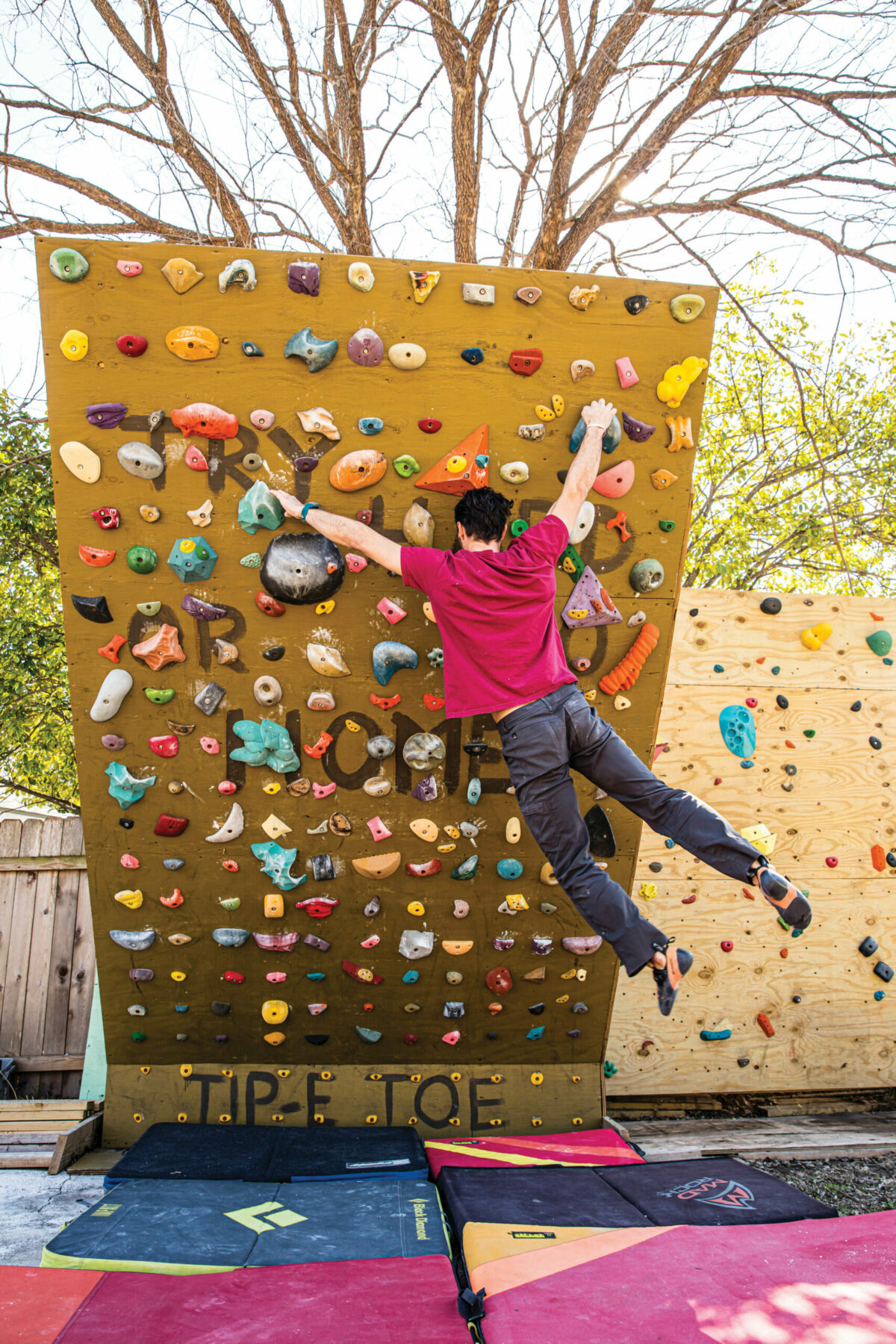
With great reward, however, comes great risk. Okavnoic says it was risky because if you mess up drilling into the board, you must buy another and waste money as boards were up to $80 at the time.
Fortunately, after the fact had a tangible reward.
“We took a step back and were like, ‘Did we just make that?’” Okanovic says. “We actually built it as it would be at a gym.”
Once it was finished, they climbed it almost every day and even invited close friends over to try it out. However, once gyms opened back up, he now climbs it maybe two or three times a week.
Okanovic hopes to add more features to it, including potentially a top deck, painted sides, more holds and another 30 feet to create a corral.
After posting about his wall project on Instagram, people started asking if he could come to their place and build one. So far, he’s built 12 at-home climbing walls across Austin. Through building walls for others, he’s gained more knowledge on specific building techniques to the point where he’ll have to return to his original wall to make adjustments. About four or five months ago, he even added two walls to expand.
“The walls that I built after mine are so much better,” Okanovic says. “So I always go back to mine and make adjustments if I learn a new trick or if someone gives me tips on how to make it stronger.”
The Climb That Stuck
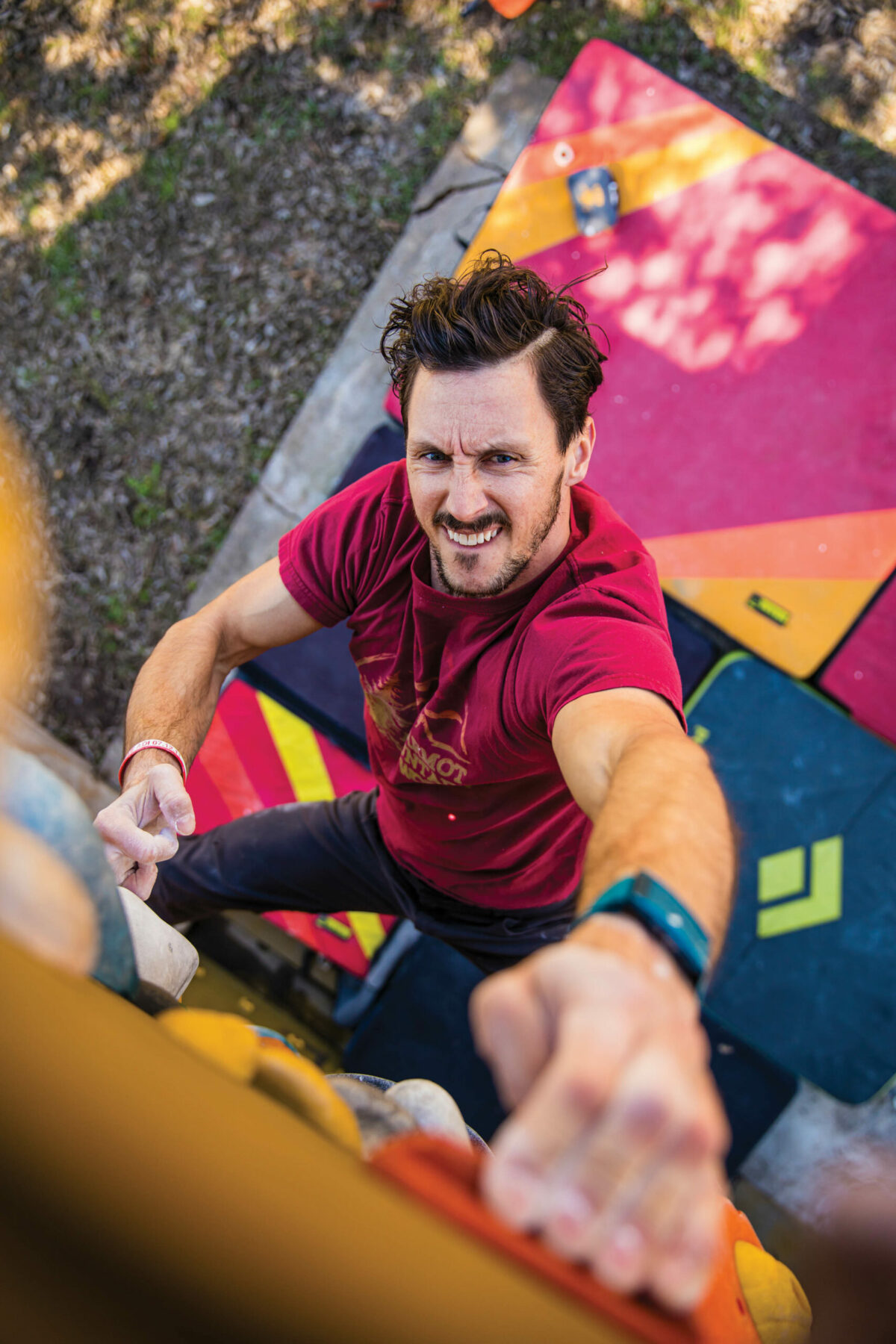
Okanovic reflects on his time rock climbing and claims this sport was the one that truly stuck. From basketball to soccer to tennis to volleyball to even martial arts, he has widely traversed the athletic scene. But once climbing entered his life, everything changed.
“I tried a lot of different sports in my life (…) and nothing stuck with me like climbing did,” Okanovic says. “When it did, I was like, ‘Maybe this is something I can pursue.’”
Through the climbing community and now having the opportunity to enjoy the sport outside, inside and at home, he has realized the prominence climbing has in his life.
“For some people, (it’s) going for a jog or walk,” Okanovic says. “This is my thing — I love to wake up and go climb.”






